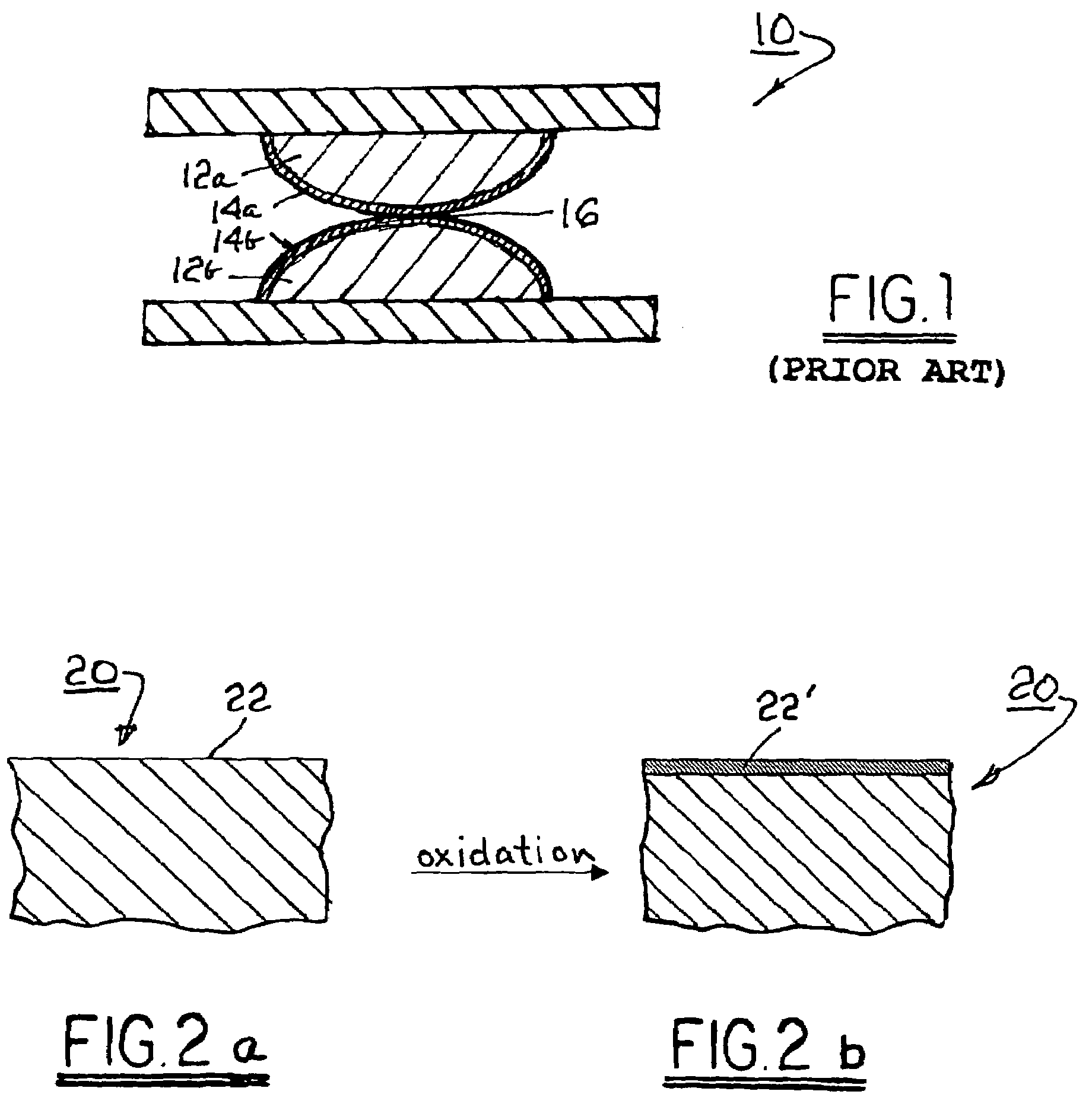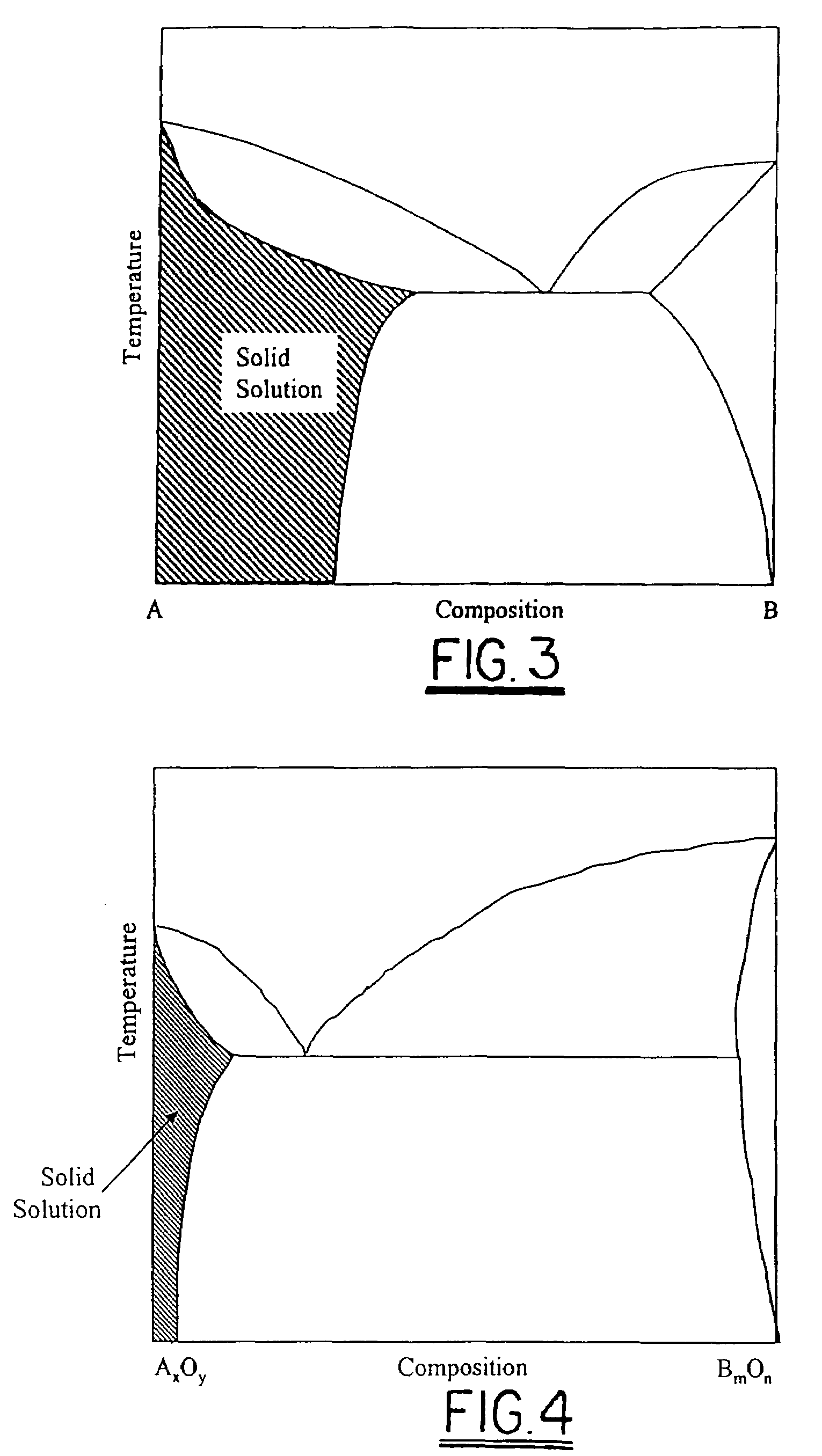Fuel cell with metal alloy contacts that form passivating conductive oxide surfaces
a technology of conductive oxide and metal alloy contacts, which is applied in the direction of cell components, final product manufacturing, sustainable manufacturing/processing, etc., can solve the problems of inability to measure resistance greater than about 0.0015 ohmcmsup>2/sup>(cmsup>2/sup>) and well-known electrical continuity problems. to achieve the effect of reducing the manufacturing cost of the apparatus
- Summary
- Abstract
- Description
- Claims
- Application Information
AI Technical Summary
Benefits of technology
Problems solved by technology
Method used
Image
Examples
Embodiment Construction
[0020]Referring to FIG. 1, a prior art electromechanical apparatus 10 includes a first electrical contact element 12a and a second electrical contact element 12b, shown in mechanical and electrical contact along respective surfaces to form an electrical interface 16. Elements 12a, 12b are brought into and out of mechanical contact by known means (not shown) to make or break electrical connection therebetween. The prior art materials of which contact elements 12a and 12b typically are formed are known to be susceptible to oxidation to form surface oxide layers 14a, 14b that are non-conductive.
[0021]Referring to FIGS. 2a and 2b, a blank 20 comprising an alloy in accordance with the invention has a free surface 22 available for oxidation to form a surface oxide layer 22′ having a conductance of, preferably, less than about 0.0015 Ωcm2. When such alloys are substituted into apparatus 10 for forming elements 12a, 12b, the resulting surface oxide layers 14a, 14b are conductive. In electri...
PUM
| Property | Measurement | Unit |
|---|---|---|
| resistance | aaaaa | aaaaa |
| conductive | aaaaa | aaaaa |
| electrical surface resistance | aaaaa | aaaaa |
Abstract
Description
Claims
Application Information
 Login to View More
Login to View More - R&D
- Intellectual Property
- Life Sciences
- Materials
- Tech Scout
- Unparalleled Data Quality
- Higher Quality Content
- 60% Fewer Hallucinations
Browse by: Latest US Patents, China's latest patents, Technical Efficacy Thesaurus, Application Domain, Technology Topic, Popular Technical Reports.
© 2025 PatSnap. All rights reserved.Legal|Privacy policy|Modern Slavery Act Transparency Statement|Sitemap|About US| Contact US: help@patsnap.com



